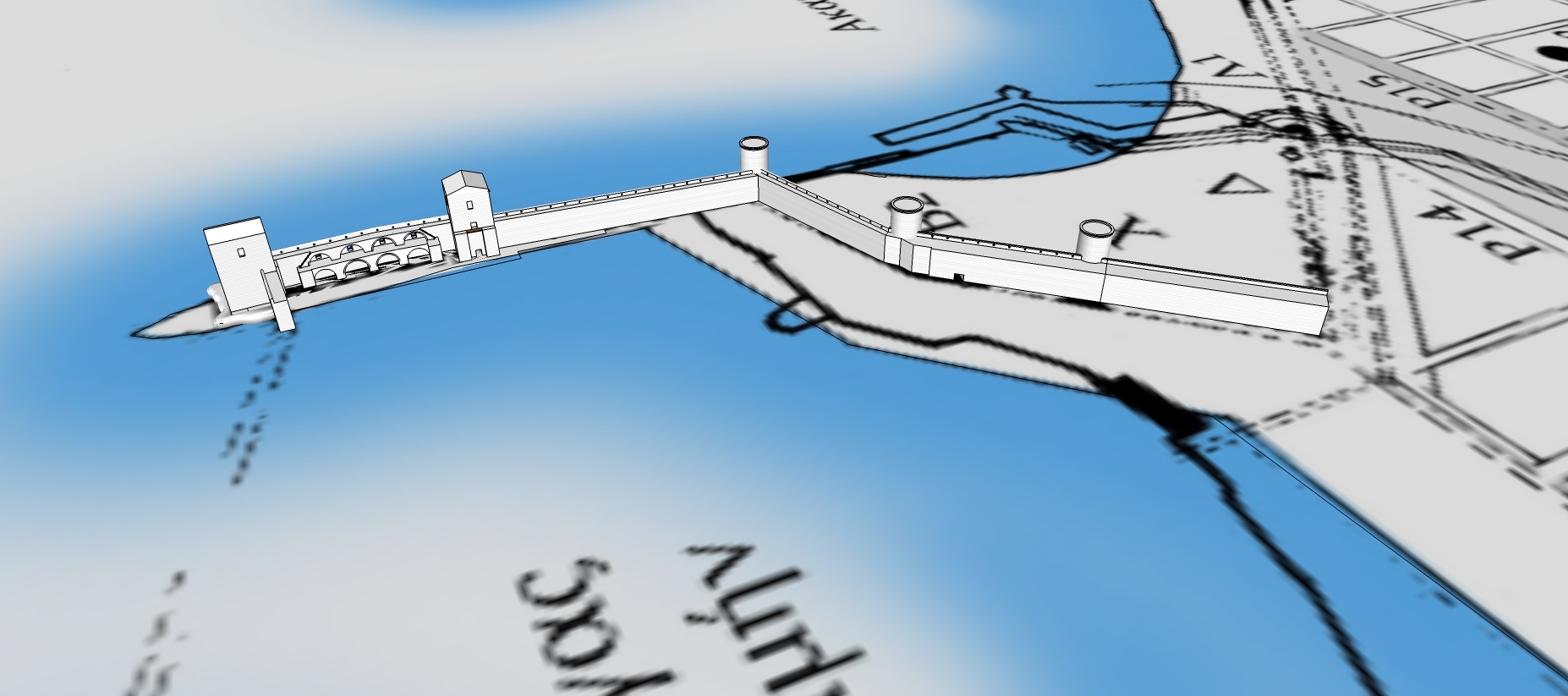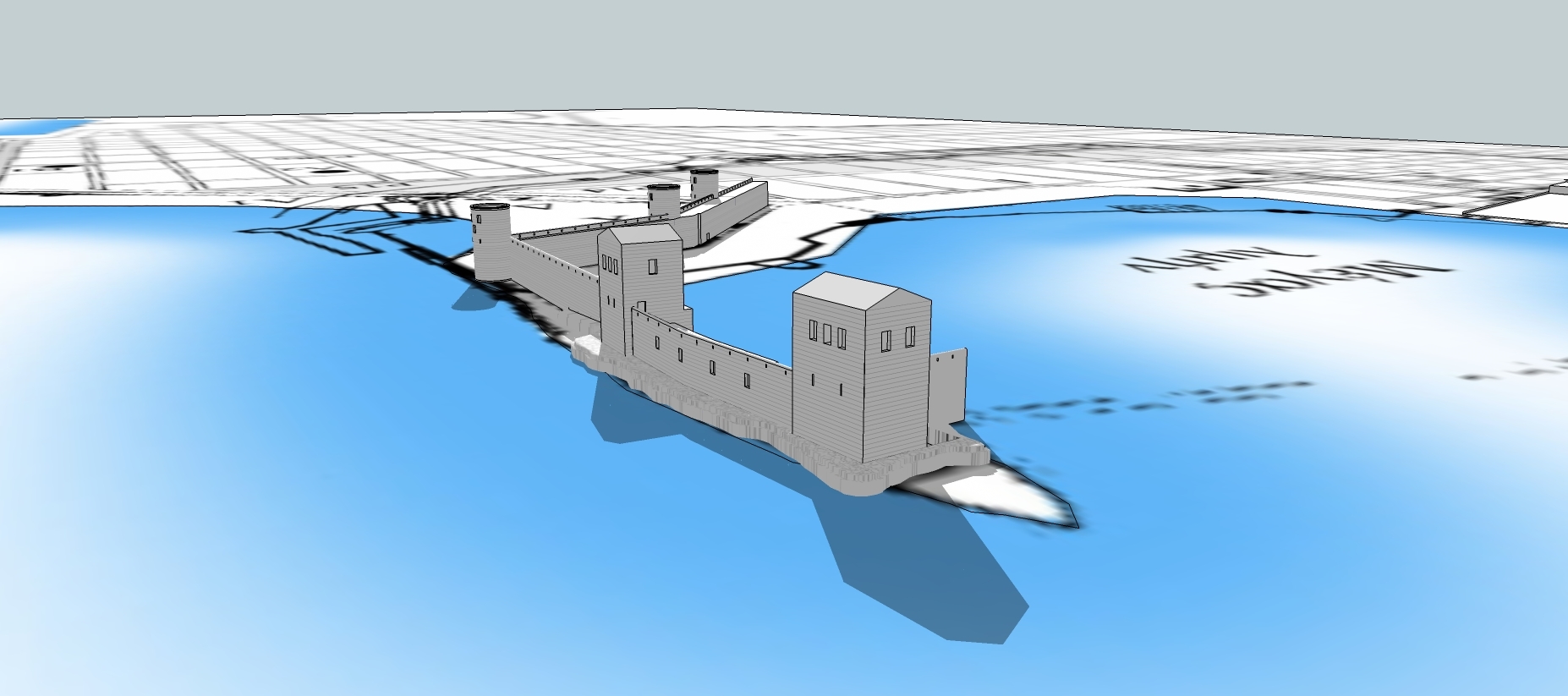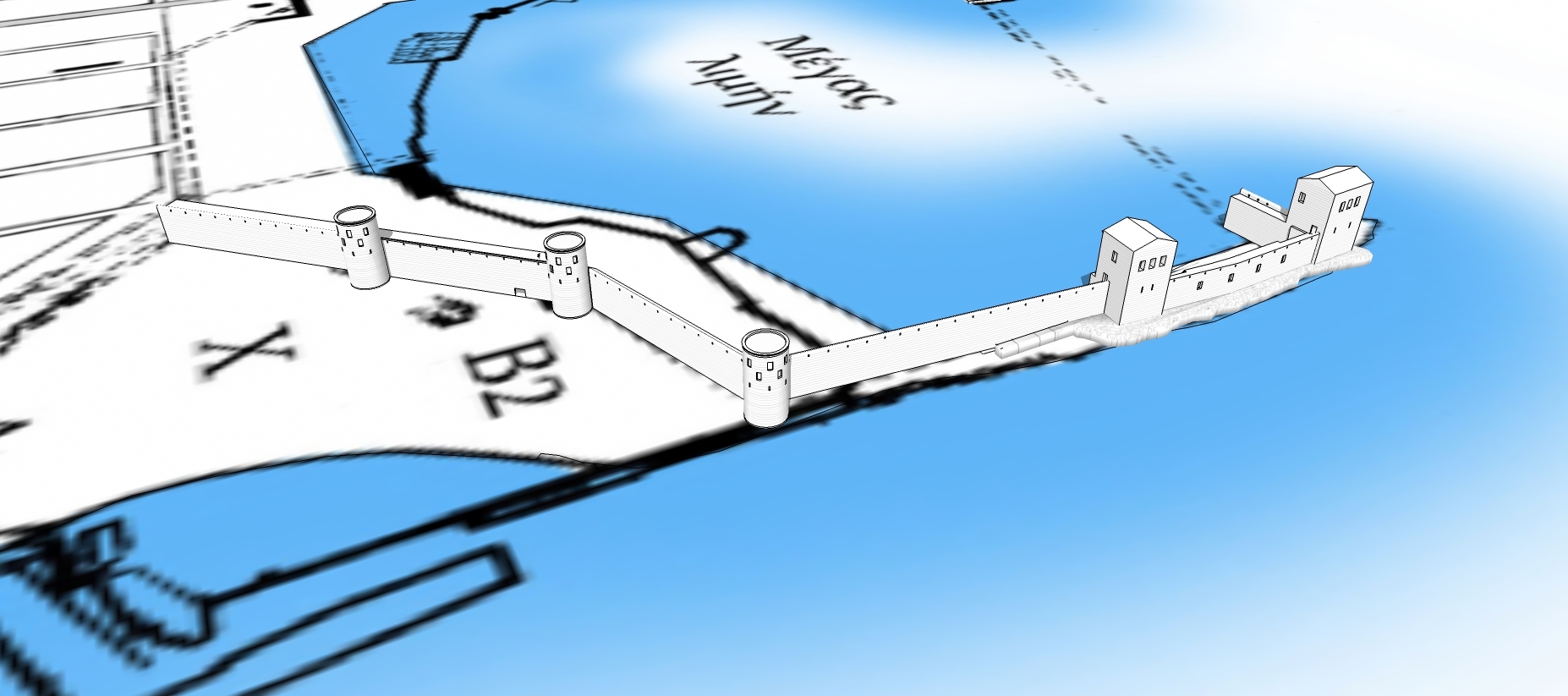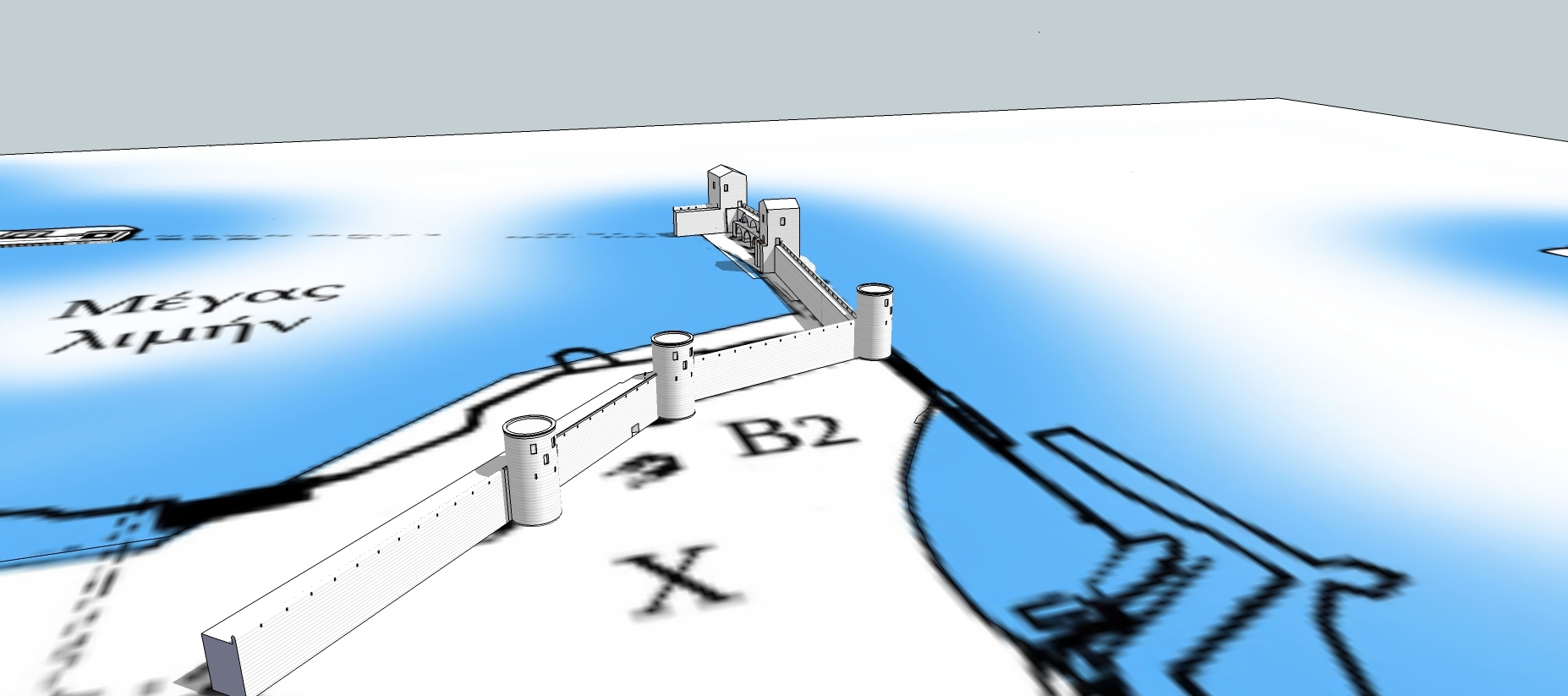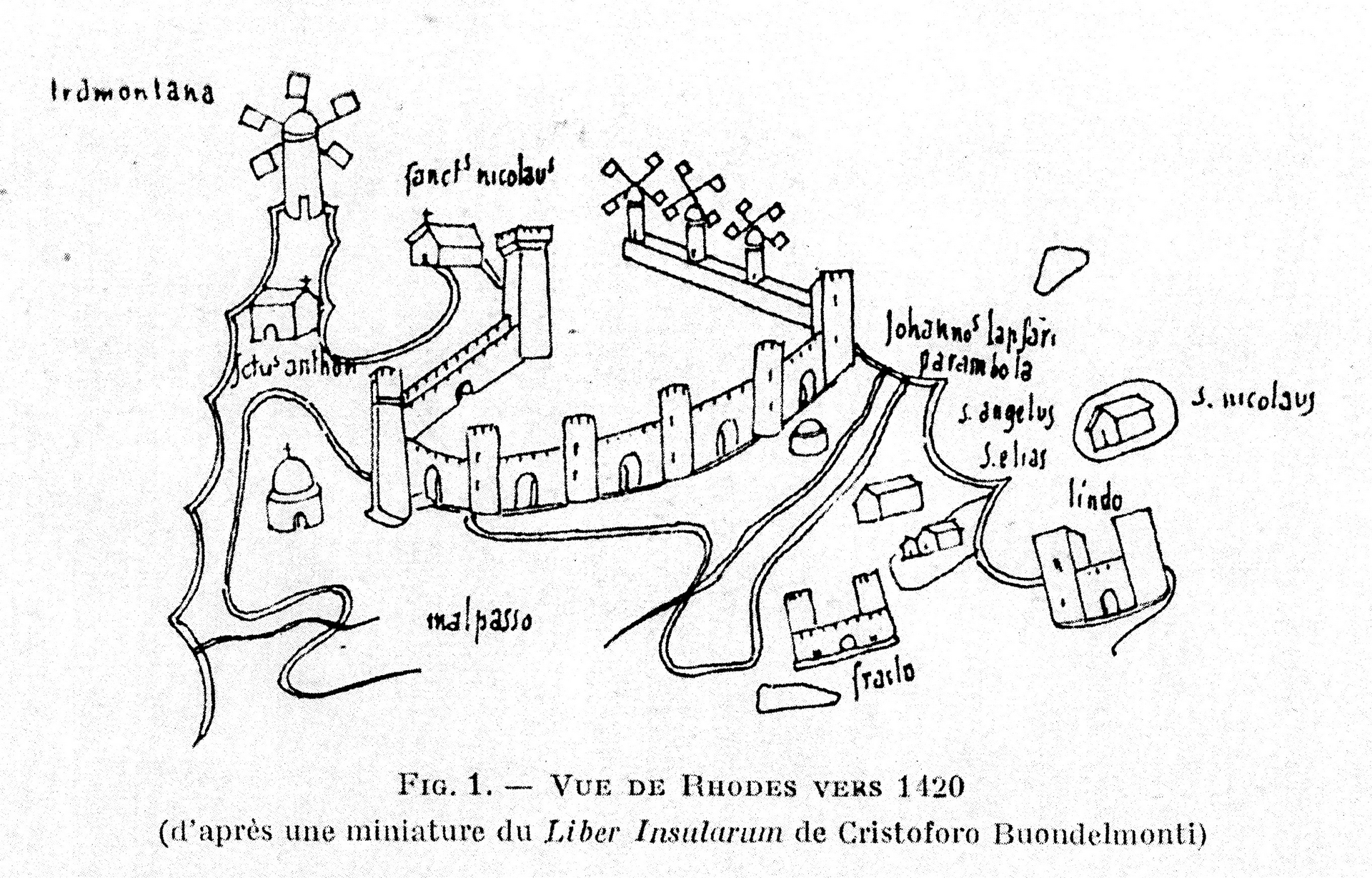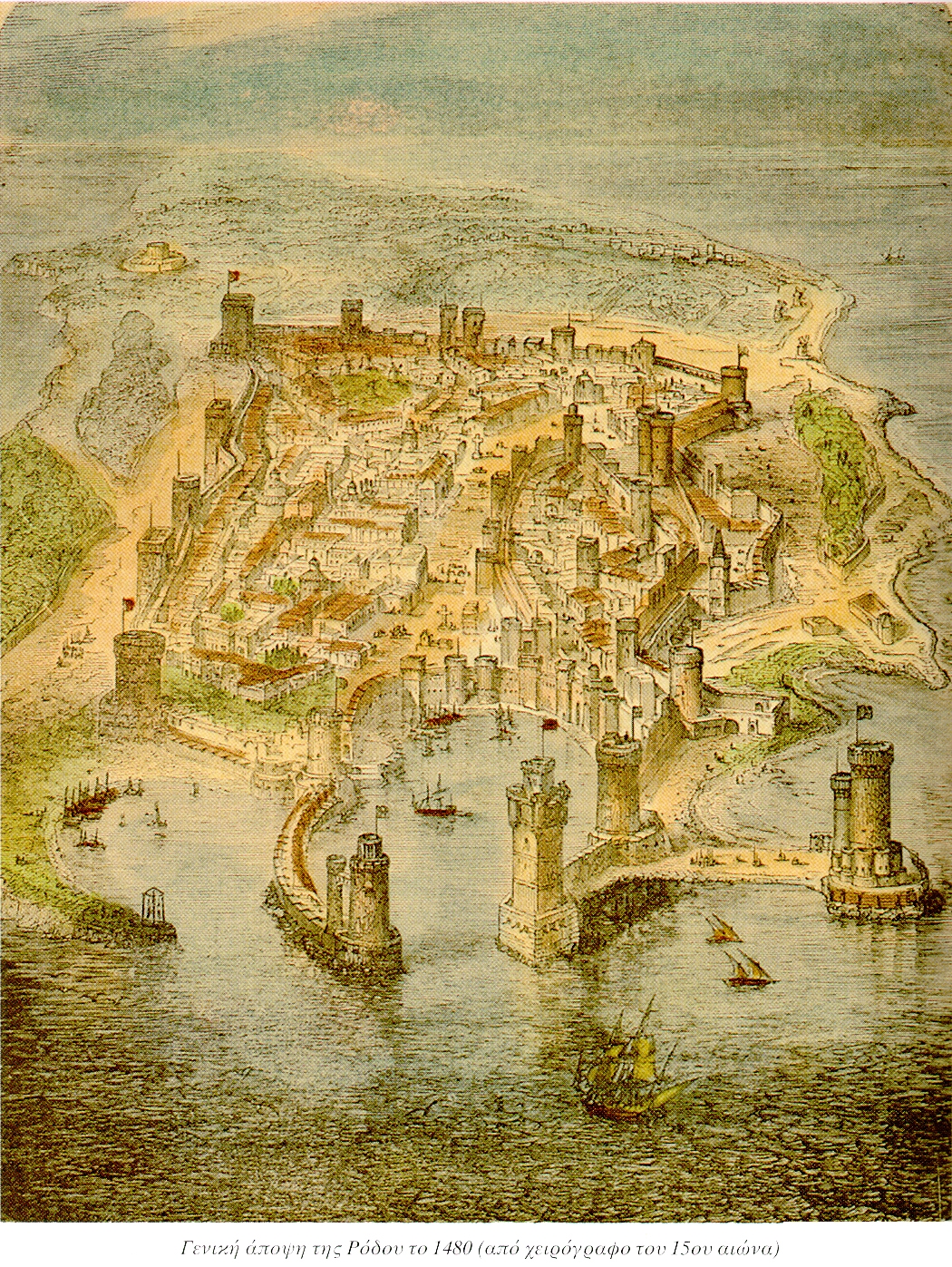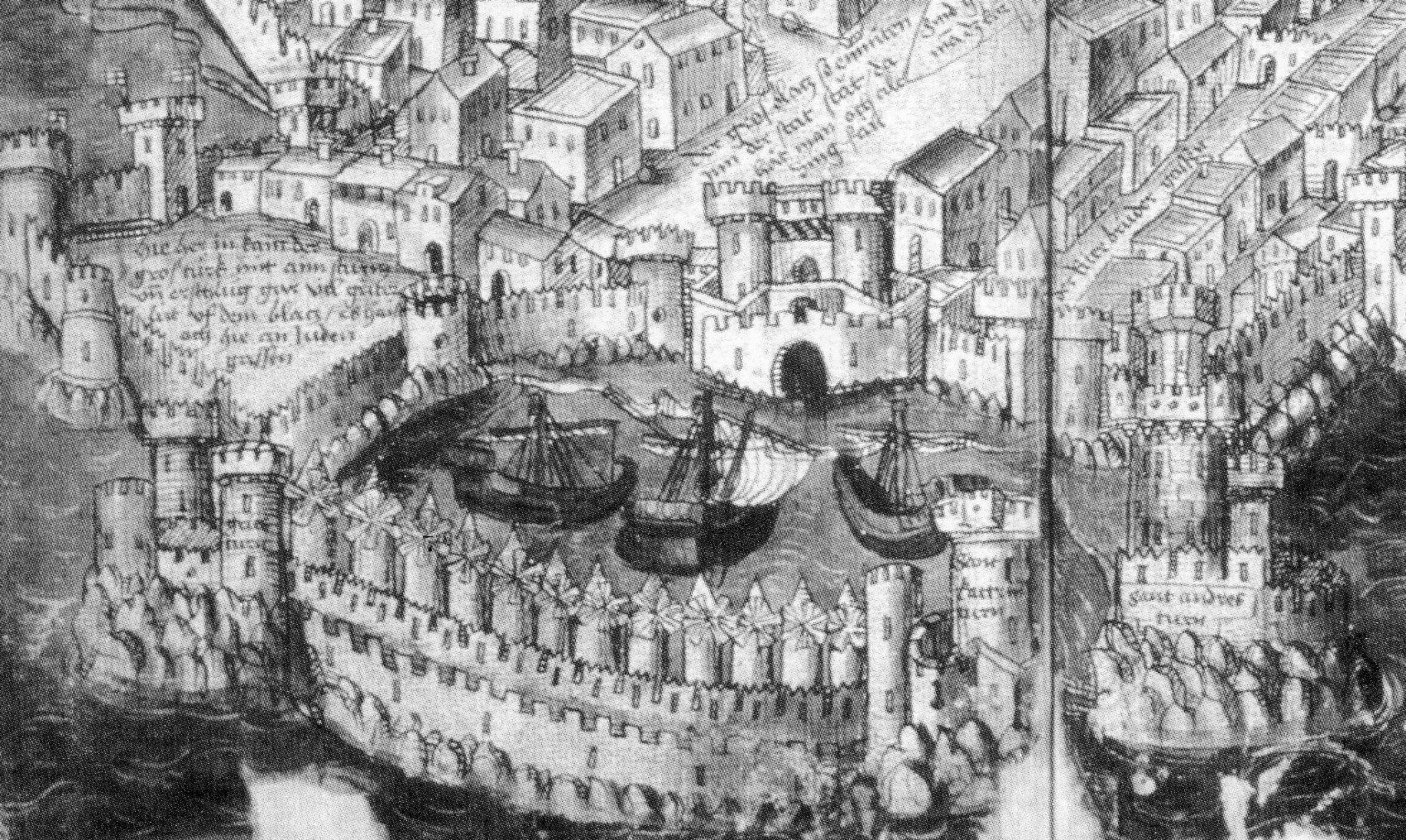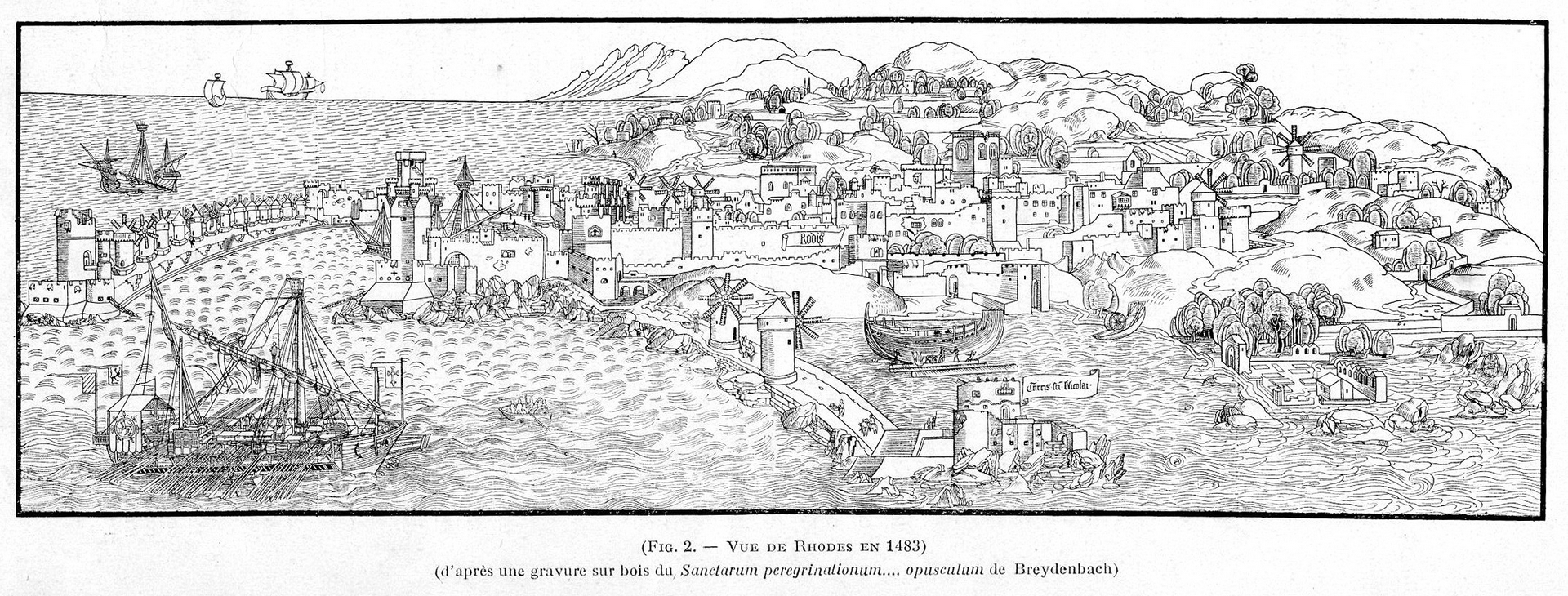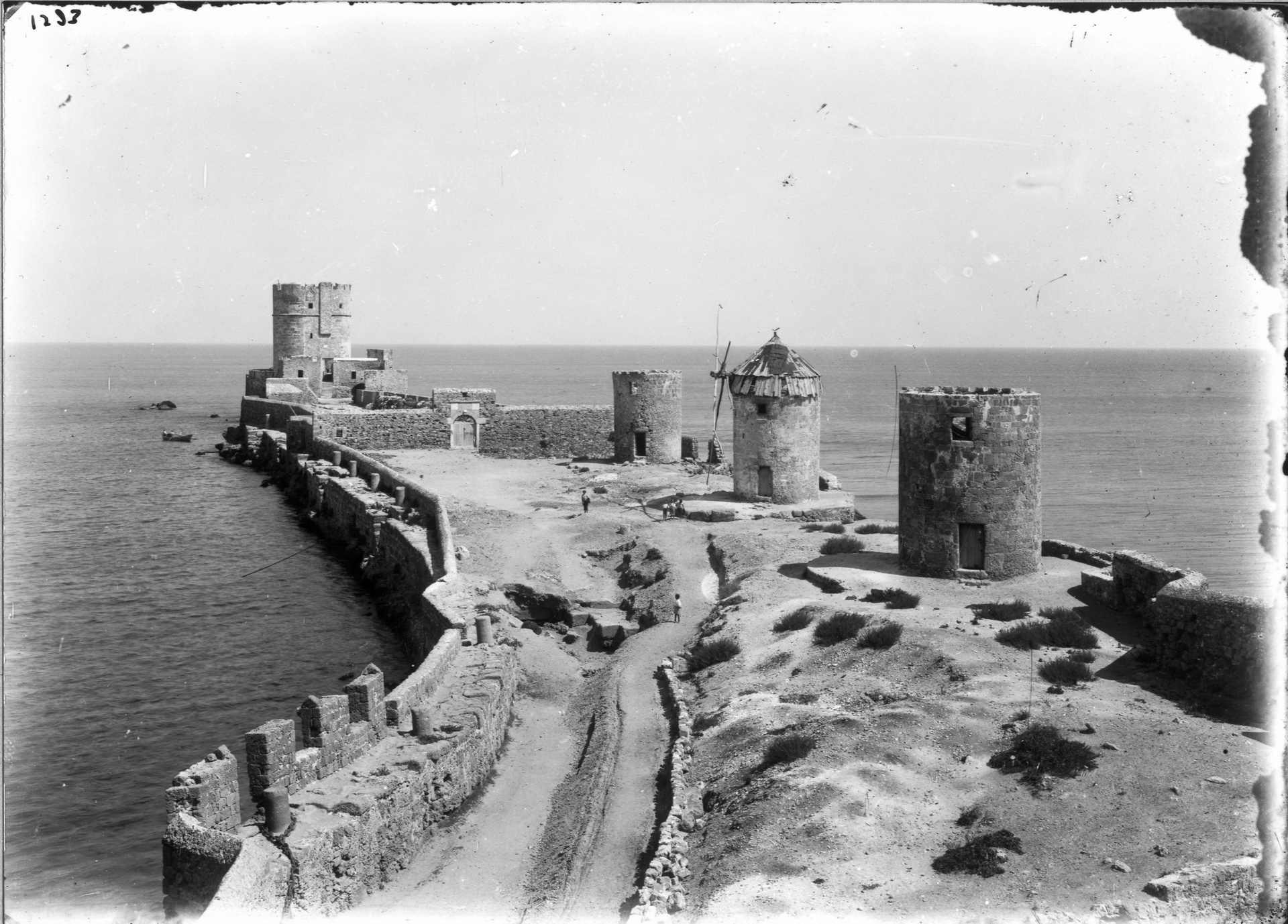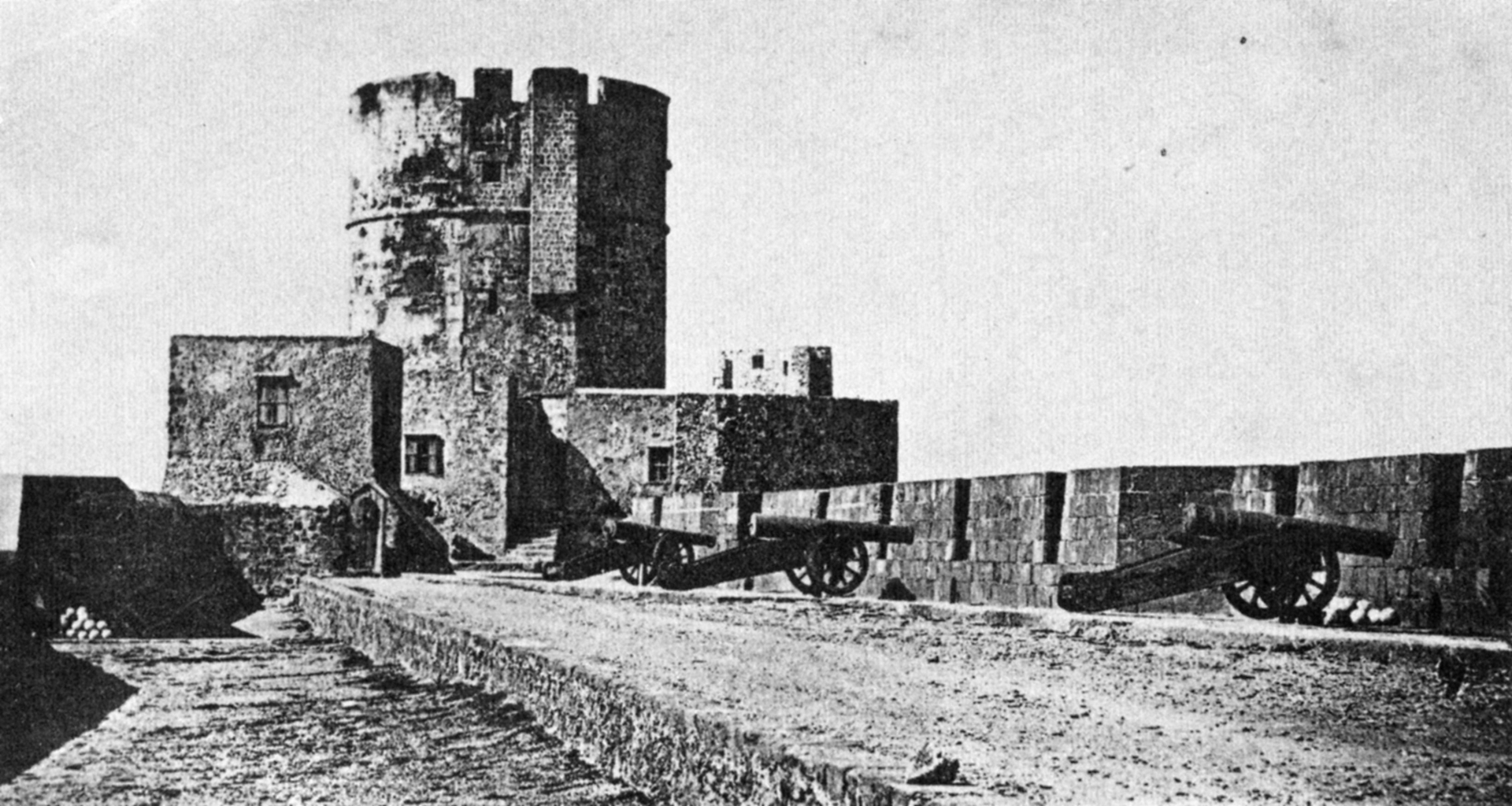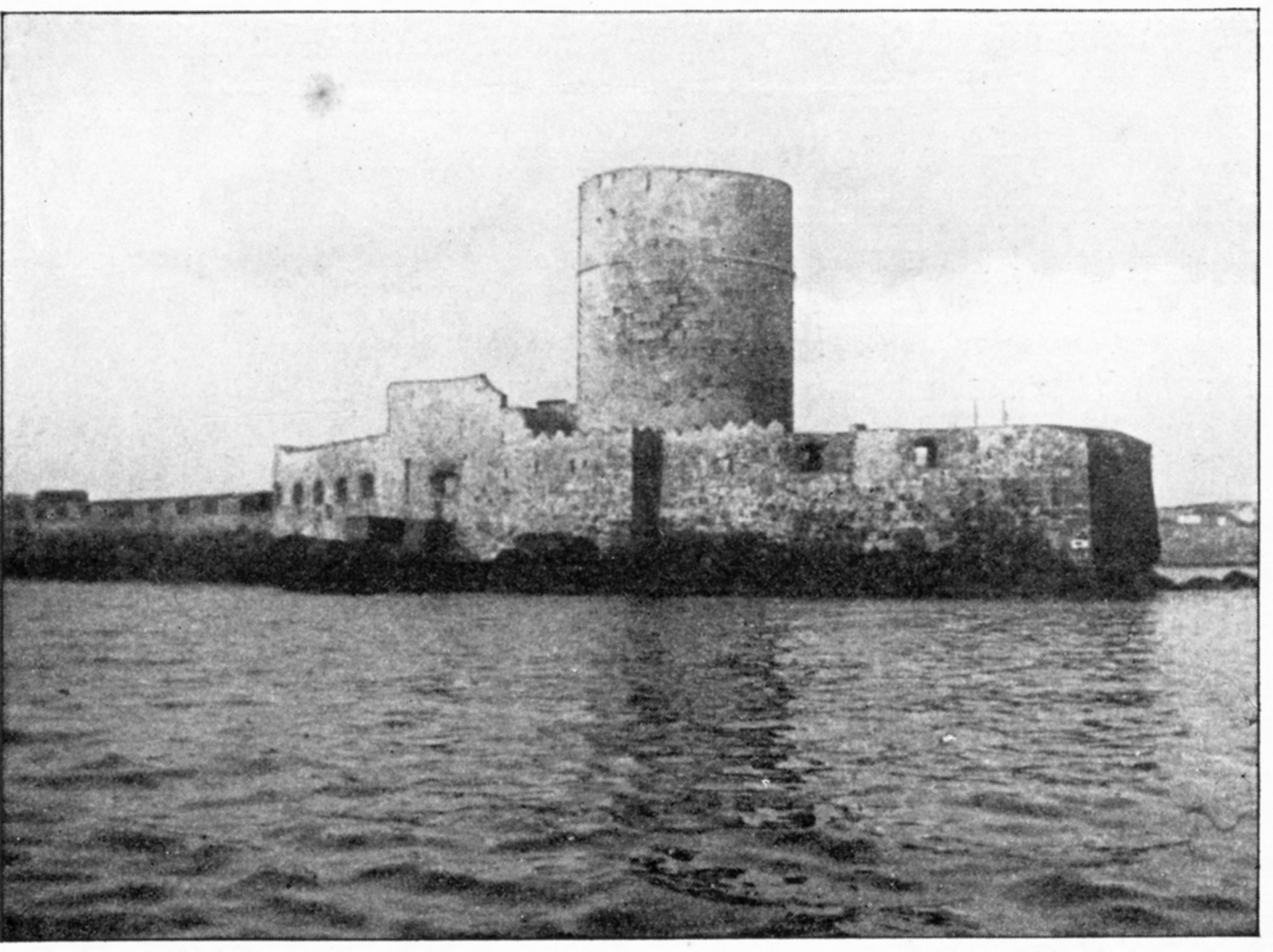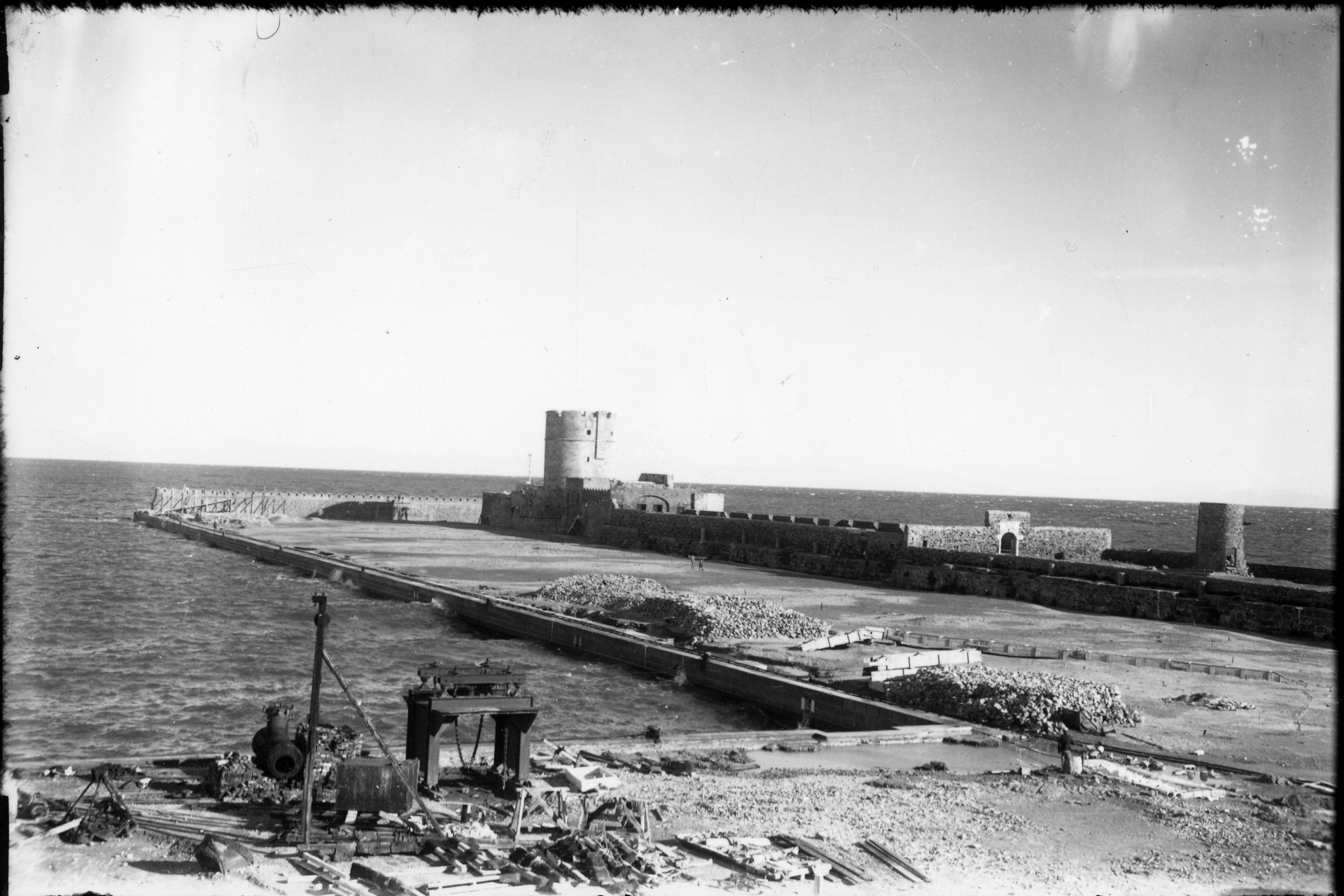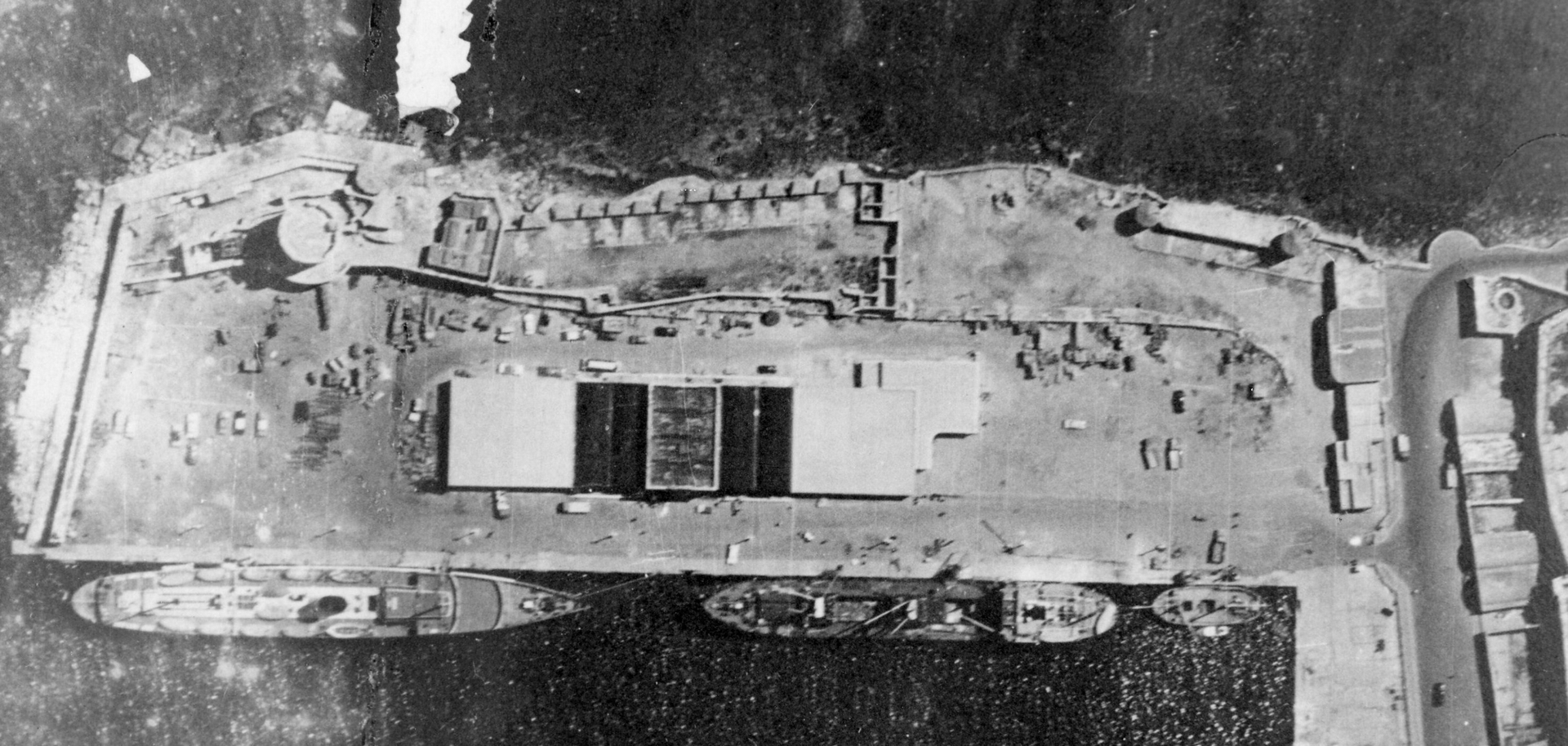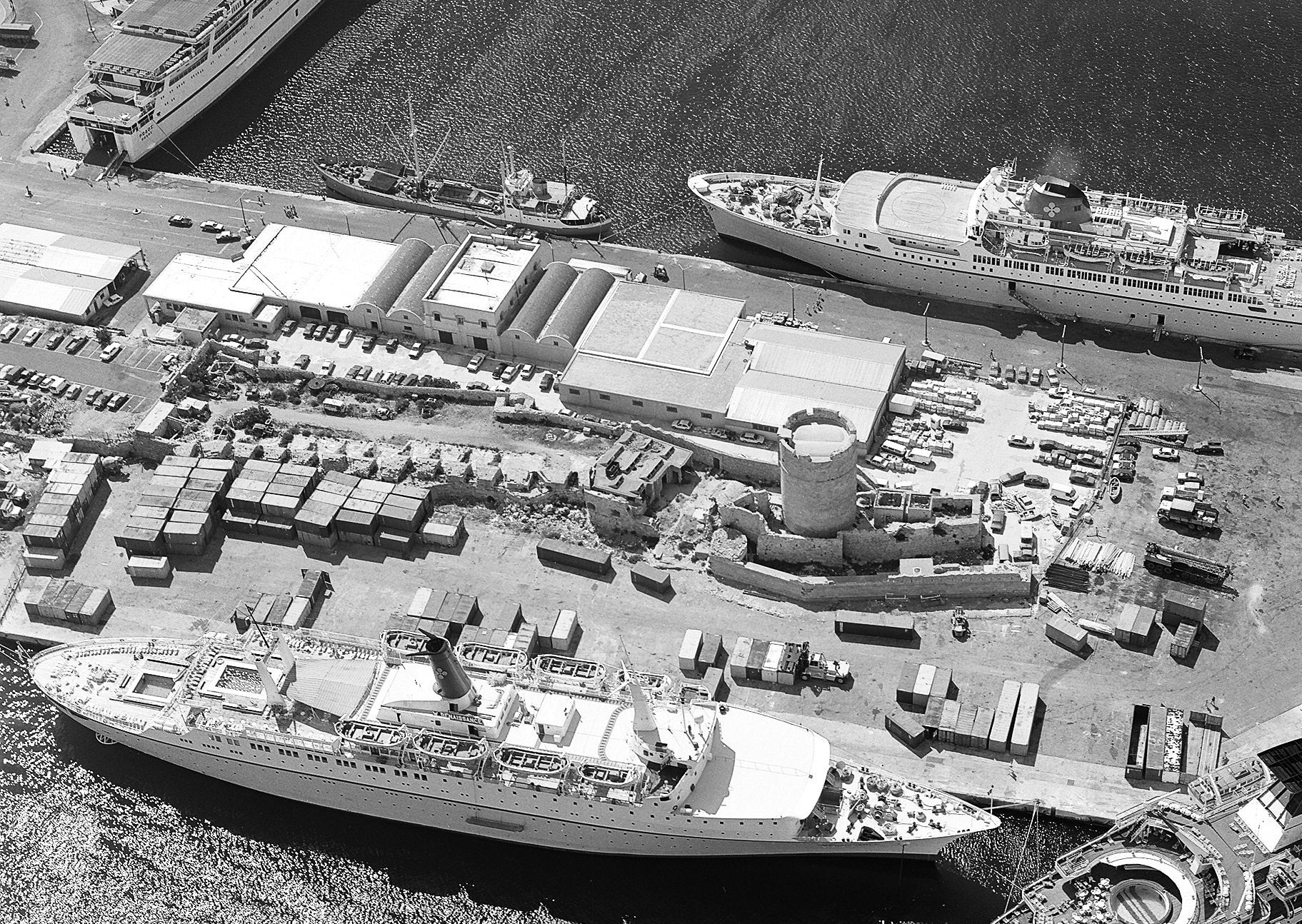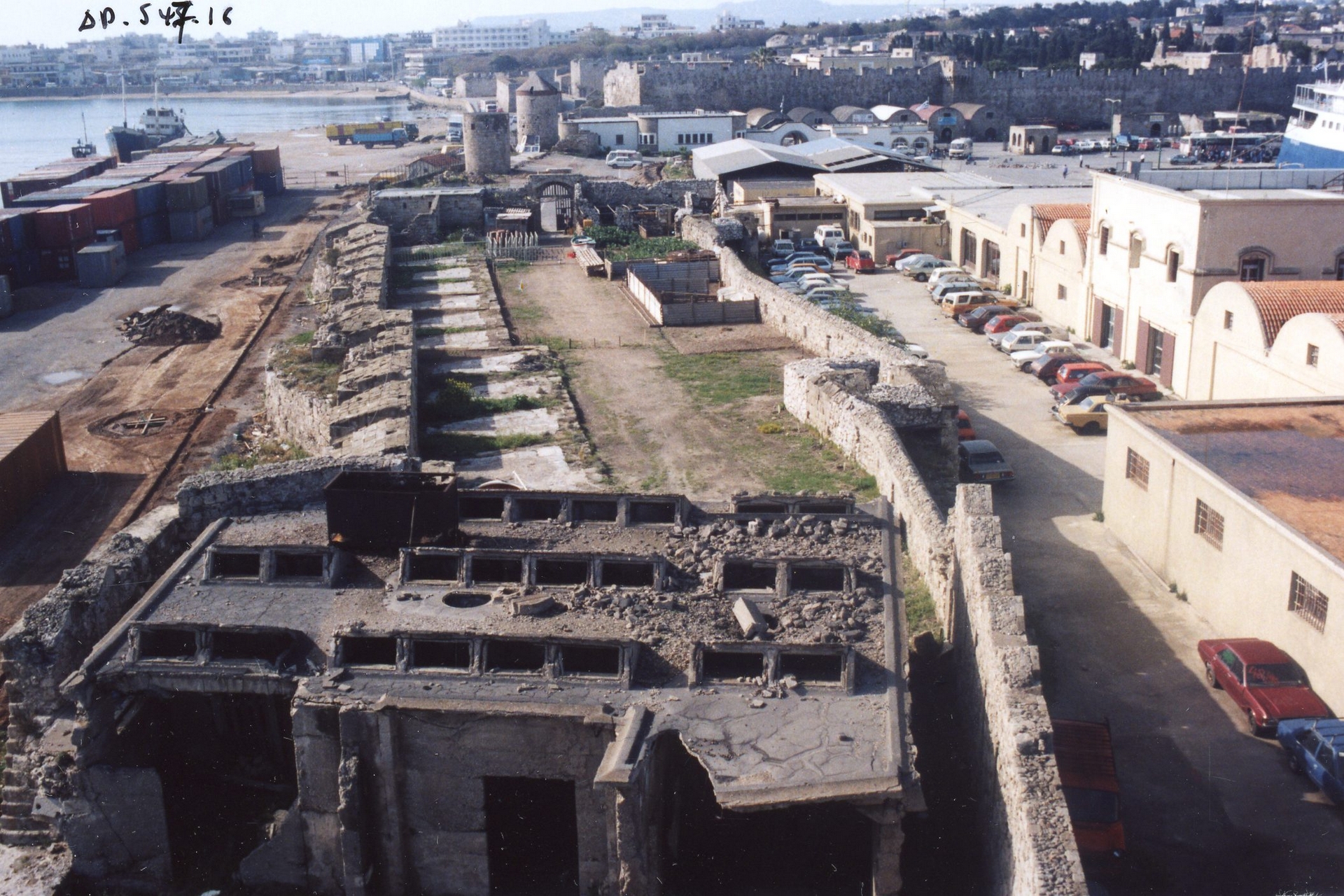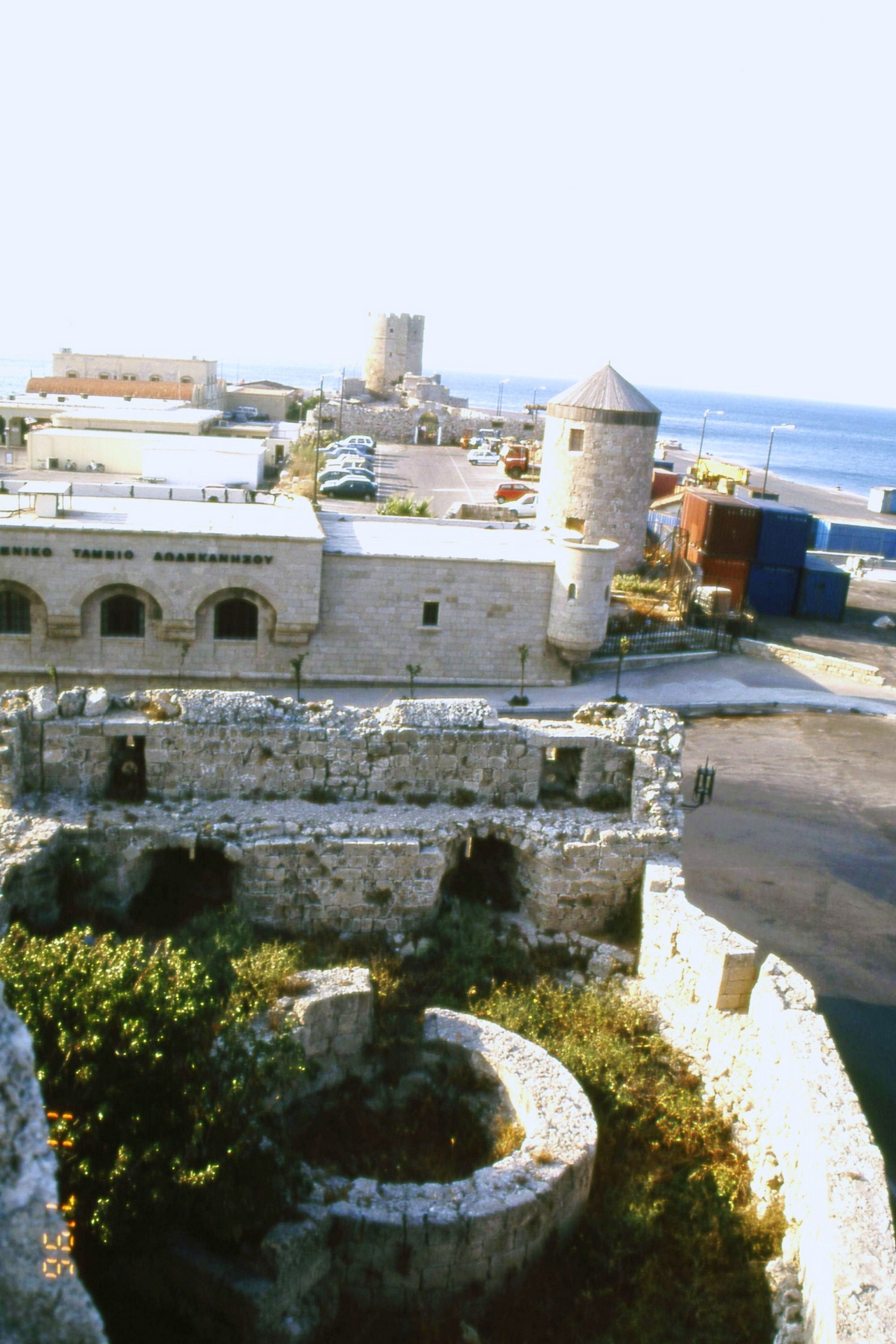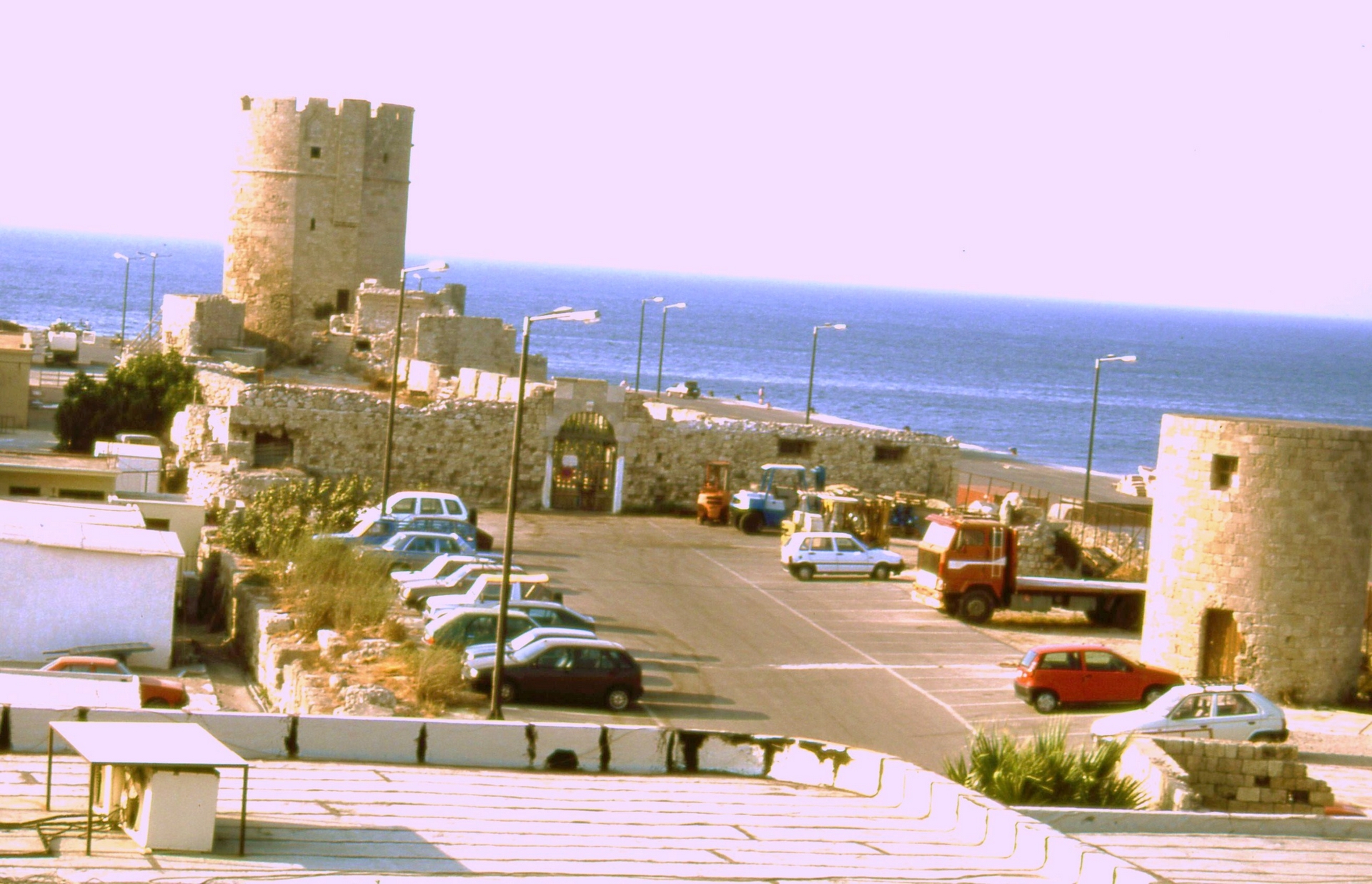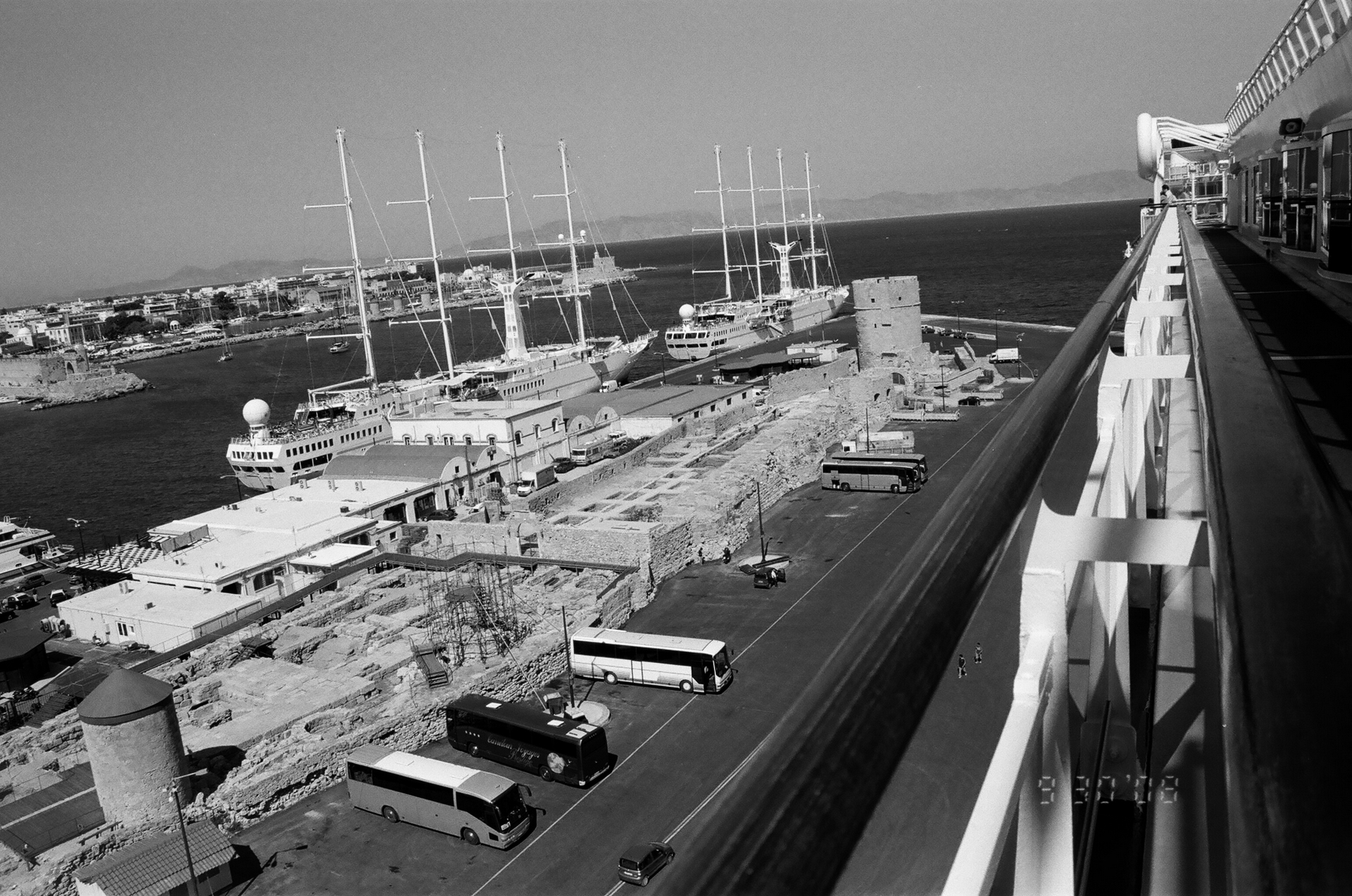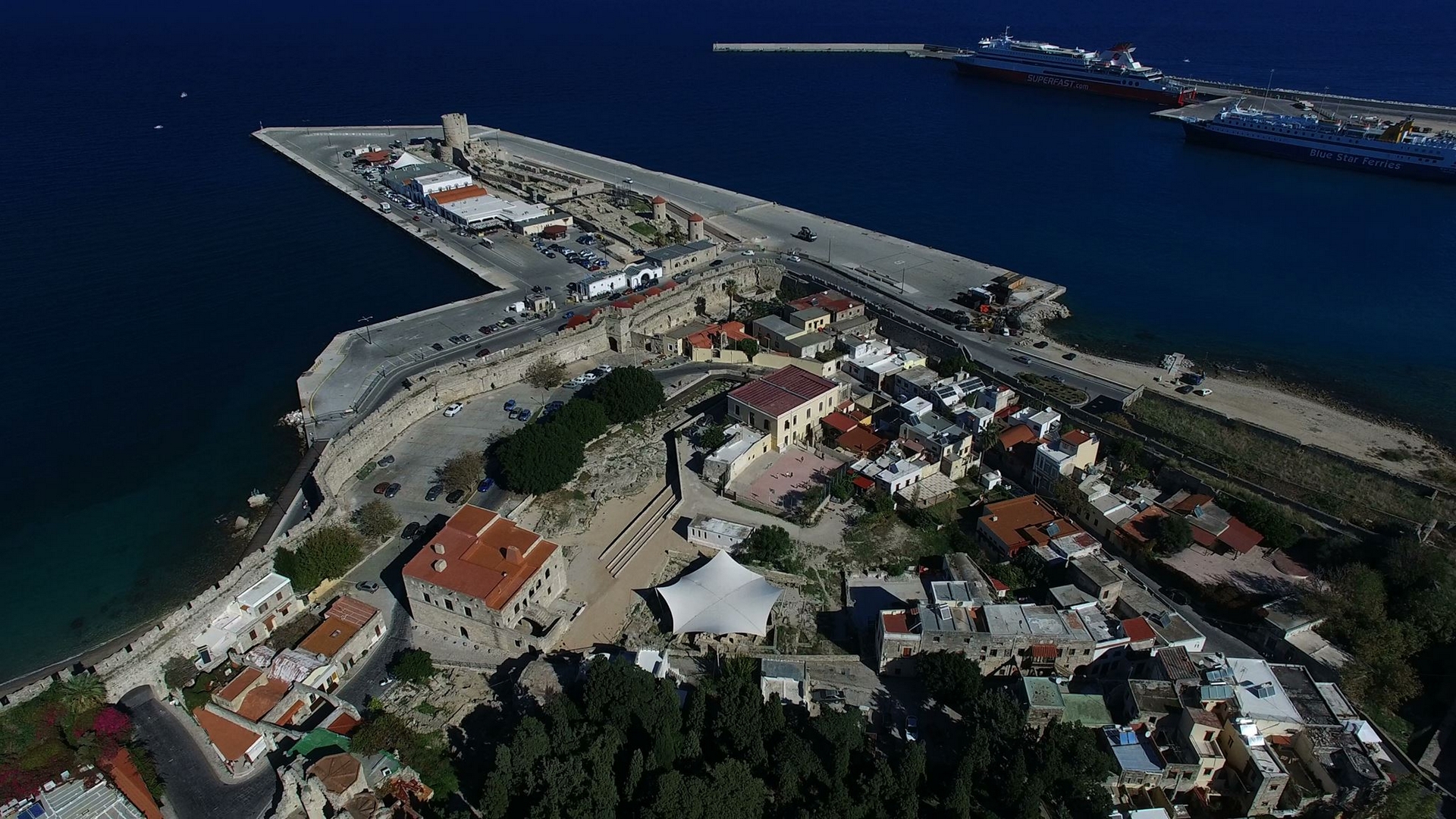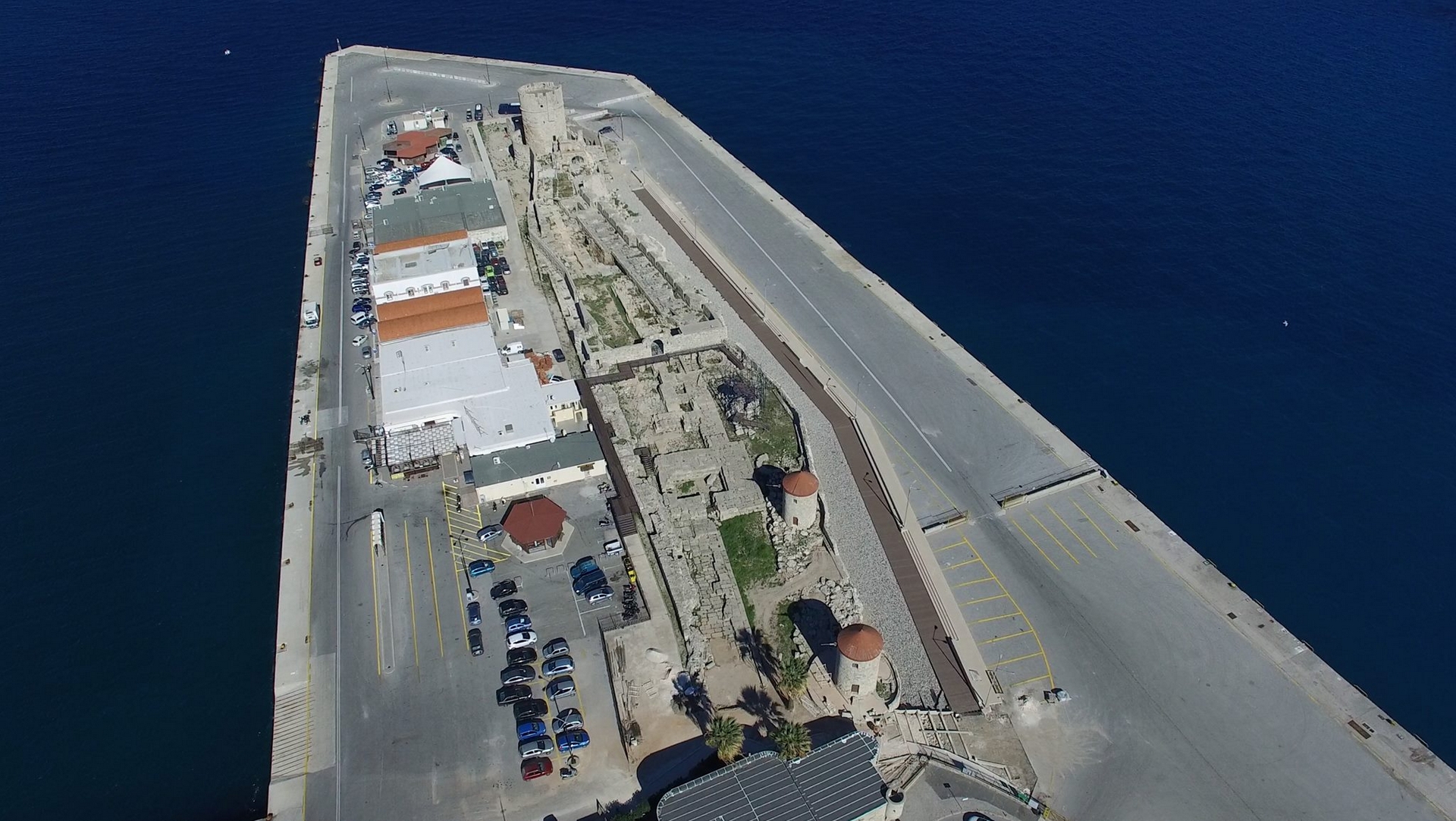Hellenistic period 305 a.C.
The fortification of the eastern pier of the ancient “great port” was constructed after the painful experience of the city’s siege in 305-304 a.C. by Dimitrius Poliorcetes (The Besieger). According to the descriptionof Diodorus Siculus, it appears that the area walls were completely destroyed when the “giant talent throwers” (huge artillery weapon throwing stones which weighed one talent {c. 26 kg}) crushed the artillerymachines the Rhodians had constructed on the non-fortified “soil” of the port. At the border of the contemporary archaeological site the northern part of the linear wall of the port is included, along with the ancient mole which ends in an enhanced curtain wall part. This structure, which included two large rectangular towers formed the north edge of the mole, which wasprotected by large boulders. The chemin de ronde (walkway) was supported by great arches which were fixed on stone counterforts in regular succession. There are indications that initially the main wall was curving to the left, in order to narrow the breadth of the port opening.
Late 2nd – Early 1st Century AD
The Hellenistic fortification and the imposing towers are still used with small modifications. There are indications of widening of the northern tower and elevation of the dock level, in combination to the addition of secondary counterforts for the creation of underground storing areas at the breadth of the arcs. With this shape, the fortification endured the victorious for Rhodians siege by Mithridates in 88 a.C.
Mid-13th century AD
The late byzantine period, especially the 13th century, the era of the Crusades, which is characterized by the hegemony of the byzantine family of Gavalas, was a prosperous period for the city of Rhodes. Commercial activity is especially high and the needs for supplying the city with wheat led to the construction of a series of windmills on the rocky elevated area of the ancient wall, through the length of the eastern flank of the mole, which is now called Mole of the Windmills. A continuous wall with ellipsoid fortified walls around the bases of the windmills was defining the eastern, assailable side of the pier, while on the west side there was the stone dock-wharf. At the northern edge of the mole, there was a powerful stretch of a wall or dock, of 8 m. breadth turning to the west, continuing the effort for narrowing the port opening.
Mid-14th century AD
Thisistheperiodofcity restructuringheldbytheOrderofStJohnofJerusalemKnights, whichoccupieditin 1309. In1356 it is mentioned that the Great Magister De Gozon “constructed the pier and closed by sea the Burgh of Rhodes”. This refers to the construction of the west side and the pier extension to the north. The jetty which confined the port opening was disused and at the same time the fixed end of the port chain was established, probably when the Naillac Tower was built, circa late 14th – early 15th century. It is obvious, by the era’s graphic depictions that during that period the mole was used as a wharf with regularly arranged double stairways, in direct connection with the operation of the complete series of windmills, the number of which reached 15.
Mid-15th century AD
During this period of intense insecurity, with the experience of the siege by the Mamelukes of Egypt in 1444and the destruction the city incurred, on the north edge of the Mole a small fortress was built, in the heart of which the imposing tower of France or Tower of the Windmills was erected. The construction of the elegant and high cylindrical tower with the independent turret with a spiral stairwell and the port bastion dates exactly back to 1451 and it was constructed with the financial aid of the Hebrews, the district of whom it was mostly shielding.
After 1480
During the harsh siege by Muhammad B' the Conqueror, which was victorious for the inhabitants of Rhodes, the Tower of the Windmills suffered almost complete destruction, and was then reconstructed by the great Grand Master of the Knights D' Aubusson, who was not able, however, to maintain its particularly complex initial layout and form. The spiral staircase was abolished, and remains in ruins until today. The tower became lower and more concrete, and at the spherical dome of its lower level an opening for the access between floors through a wooden stair was created. The windmills were maintained or reconstructed since their operation was necessary for the town.
Period of the Turkish Rule
During the Turkish rule, the area of the mole of the Windmills was downgraded, since the moorage of the central area of the sea gate, where the Customs etc. were installed, operated as a port. Most windmills were gradually disused, particularly after the construction of the fortification wall at the northern part of the mole in the end of the 19th century. It is the only monument of fortification architecture from the Ottoman era, which remains in the town of Rhodes, with the characteristic battery turned towards the strategically vulnerable area of Acandia.
Period of the Italian Rule
The Italian administration's decision to place the modern port of the town at the mole of the Windmills, by constructing a new pier with the development of onshore facilities to its west, resulted in the definitive fading of the naval citadel character initially in regard to the interior of the commercial port's basin. The design of this era's building complex is attributed to famous Italian architects, and their works have been listed as modern monuments of the history of Rhodes.
Contemporary port
The port suffered heavily from the bombings of the allies during the Second World War, when the third saved windmill and the elongated construction of the Italian rule between the two southern windmills were destroyed, dragging along part of the eastern wall. During the 1970s, the concrete waterfront was also extended along the eastern side of the mole of the Windmills, completely depriving the monumental complex of its marine character. The medieval masonries were sunk in a concrete platform, and totally lost their monumental character, getting more and more downgraded between trailers and containers. After the construction of the new port of Acandia, the particularly disturbing to the monumental constructions commercial traffic, as well as the liners' movement from and to Piraeus, were recently transferred.
Modern day
The tourist port operates now in the mole of the Windmills, and the frequent movement of big cruiser ships, which transport hundreds of thousands of visitors of Rhodes every year, has created the prerequisites of restoration-enhancement of the timeless historic constructions with the creation of an "Outdoor Museum". Thechoice to be integrated into the program of the Southern Aegean National Strategic Reference Framework (2007-2013) fit within this framework, with the priority of the perimetric enhancement of the mole with the topsoil removal-shaping of the established zone for the protection of a 10.00m. breadth to an area of strolling, relaxation and admiration of the monuments of all historic periods.
